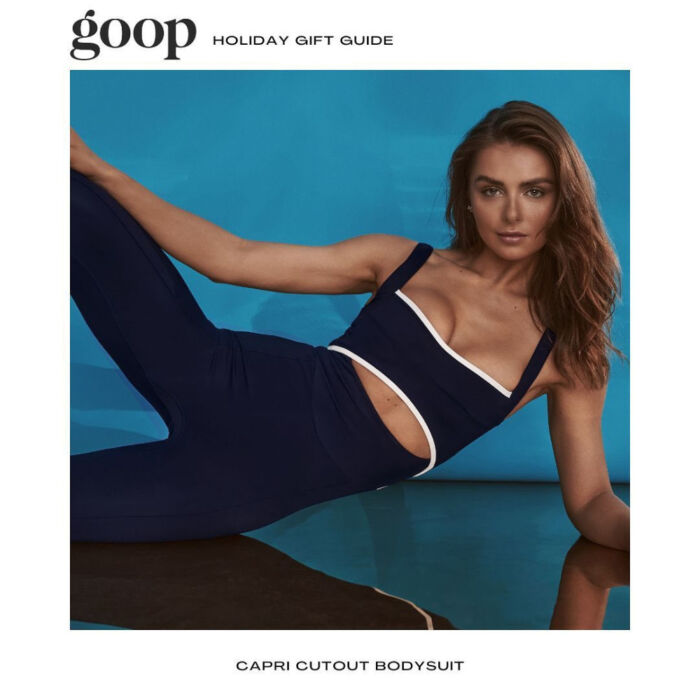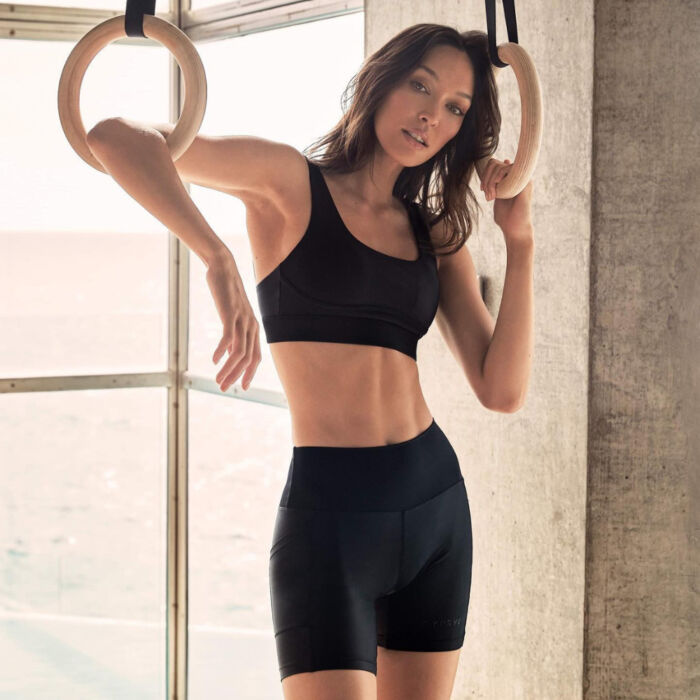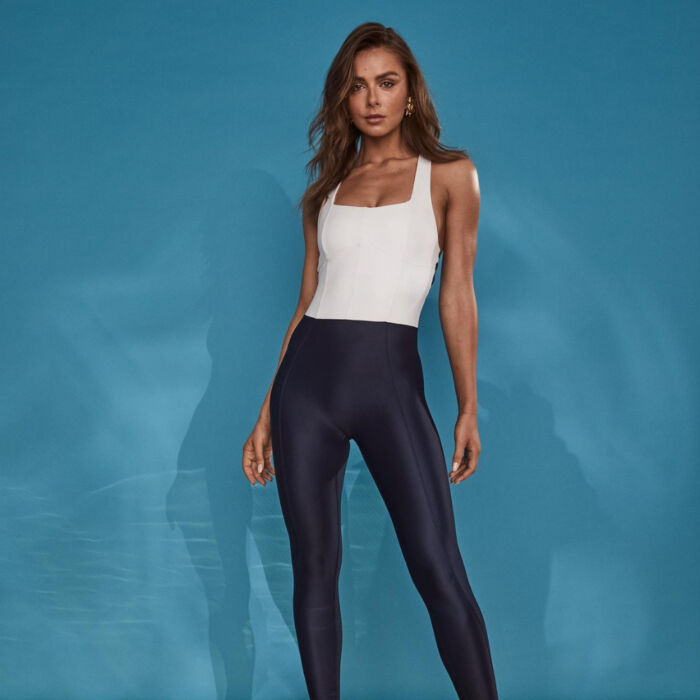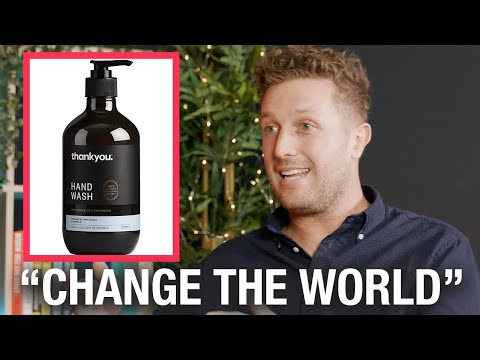When you think of water-guzzling industries, fashion might not leap to mind. But the fashion industry is actually the second largest consumer of the world’s water supply. And fashion produces a whopping 10 percent of humanity’s carbon emissions, according to the World Economic Forum.
Akshay Raj and his wife wanted to do something about it.
Five years ago, the duo launched 1Ō8 Sportif, a slow-fashion brand that bridges the gap between activewear and athleisure and creates sustainable garments built to last. Since its launch, the brand has been recognized globally for its quality and integrity, including being named on Goop’s 2022 holiday gift guide.
Prior to launching 1Ō8 Sportif, Raj’s wife worked as a fashion buyer and designer, so she saw firsthand the enormous amounts of waste in the industry. Using Raj’s background in engineering and business, they merged their skill sets to create a brand with a “make less, make better” philosophy.
But fabricating a sustainable fashion brand from idea to apparel isn’t easy—and, Raj says, it’s not supposed to be.
Fast Fashion vs. Slow Fashion
These days, most of the fashion industry operates using what’s called fast fashion. No, it’s not garb for Olympic sprinters, as fun as that sounds.
The term refers to the accelerated shifts in fashion trends that result in more demand for new products and production. With ever more products “on trend,” more materials and energy are required to make them.
Most fabrics are created from raw materials such as cotton, which requires an exorbitant amount of water, or materials such as polyester, which are sourced from nonrenewable, oil-derived plastics—hence the industry’s high emissions.
Besides the environmental side effects, another major consequence of fast fashion is poor labor conditions for workers. Because of the demand for cheap clothing, like the kind found on discount racks in box stores, apparel companies tend to cut costs at the source of production—the workers. The result is work environments in textile and garment factories with grueling hours, lowball pay, and otherwise inhumane conditions. So understanding who makes the products is as important as how they are made.
The inverse of fast fashion is what Raj calls slow fashion. And to create a sustainable fashion brand, Raj needed to work backward.
How do you combat trendy products that change on the whim of a celebrity post?
Make something timeless and seasonless.
How do you make quality clothing without using raw materials that waste water and output carbon emissions?
Recycle existing materials and repurpose them.
And last, how do you create a product that ensures workers are being treated fairly?
Partner with a manufacturer that treats its employees equitably.
Before 1Ō8 Sportif could become a business, these are the steps Raj and his wife took to create a brand that doesn’t just market sustainability—a la “greenwashing,” or advertising that presents a company as more environmentally friendly than it actually is—but is truly sustainable at all levels.
“We were really passionate about changing the way people looked at fashion, as opposed to it just being a short-term investment, into a long-term investment piece that you can actually wear for years and seasons to come,” Raj says.
Raj understood the formula for creating a sustainable product, but would he be able to do it realistically?
Don’t Skip: This Founder Used TikTok to Validate Her Child Safety Bands
3 Pillars of Slow Fashion Brand
Instead of jumping into development, Raj started by getting feedback from an ideal audience. Because of his wife’s connections in fashion, they reached out to industry players who know what makes customers tick.
“The first stage was understanding what people wanted,” Raj says.
“I think the biggest feedback we got was that sustainable products sound good, but [customers need to know] what sits behind sustainability.”
That feedback informed the duo’s product development process and go-to-market strategy. Using his wife’s experience in design and marketing and Raj’s business acumen, the couple focused on creating seasonless, luxury active and athleisure clothing.
To make garments seasonless meant the clothing color needed to be monochromatic and adaptable to different outfits and applications. For example, if you come from yoga in the park at 9am, you could throw a sweater over your bodysuit and be ready for brunch at 11am.
With the brand look and feel down, Raj focused on answering the big question posed in their initial feedback: How do you explain to customers what “sustainability” means?
Raj calls their sustainability focus “the three pillars.”
1. Manufacturing
The first pillar is manufacturing. To create 1Ō8 Sportif’s products, Raj worked with a company in Italy that produces a product called Econyl, which is regenerated nylon fiber/yarn made from pre- and post-consumer waste such as fishing nets.
“So while it’s still nylon, in the sense that it’s not going to decompose… it can be recycled infinitely,” Raj says. “So that way, it’s basically giving it multiple lives, and it doesn’t need to go into a landfill.”
2. Shipping
The next pillar is shipping. While Econyl reduces manufacturing waste, it doesn’t solve the impact of freight carbon emissions resulting from product delivery. To offset this catch-22, 1Ō8 Sportif became one of the first adopters of logistics delivery service DHL’s Go Green Initiative.
“Basically, [the initiative] makes sure that all the emissions that are used from shipping (products) from our door to our customers’ doors are offset and negated in an [investment in a wind or solar] farm,” Raj says. “Which I think, again, is very powerful, and we would like to see more of the industry shifting and adopting things like that.”
3. Labor
The final pillar is labor. After developing his products and offsetting carbon emissions from shipping, Raj needed to meet the people behind the garments. He took his time researching manufacturing practices that focus on equitable worker compensation.
Raj settled on two smaller manufacturers in Bali and Indonesia. He visited the facilities to see how they worked and learned about the insurance they offered workers, the daily meals provided, and double pay for overtime.
“Even though it costs us a lot more to partner with them in Indonesia compared to, let’s say, some manufacturers in China, there was just not enough transparency for us to be comfortable working [in China],” Raj says.
Through the three pillars, Raj created a sustainable product development process. But would people buy what they were selling?
Selling Sustainability
Because of Raj’s detailed commitment to developing sustainable products, the price would need to be at a premium.
“People love the idea of being sustainable and buying sustainable products, but [many] aren’t willing to pay that premium just yet,” Raj says.To balance quality standards with product demand, Raj and his wife decided to market 1Ō8 Sportif’s apparel as limited lines. The tactic allowed them to order minimum qualities—another sustainability advantage because it reduces the risk of wasting resources on excess products that might end up in a landfill—and create product scarcity, thereby driving up demand.
But it took a few mistakes for Raj to refine their marketing strategy.
When he started advertising using Facebook Ads (now Meta), he would boost 1Ō8 Sportif’s giveaway posts. Unfortunately, that actually targeted people who wanted free stuff—the opposite of their target audience.
After taking foundr’s How to Run Facebook Ads course, Raj built a comprehensive advertising funnel that inspired, educated, and informed their target customers about 1Ō8 Sportif’s sustainability and long-term benefits.
Raj’s takeaway?
“Try and put yourself in the target consumer’s shoes and understand what benefits they would actually get from your product and work backward from there.”
At the top of the funnel, instead of focusing on the finer details of 1Ō8 Sportif’s sustainability efforts, Raj concentrated on the benefits of their products, such as wearability throughout the day, comfort, and outfit adaptability. As the customer moves down the funnel, Raj says they remarket with messages about 1Ō8 Sportif’s sustainability.
“[We’re] basically telling them, ‘You’re helping us shift the dial from fast fashion to sustainable fashion by actually investing in these pieces,’” Raj says. “They’re like, ‘Oh wow, OK. So I’m not just buying something for the short term. It’s something that’s going to last me longer.’”
Living Up to Your Marketing
Raj says marketing around sustainability needs to involve telling a story instead of saying something is “cool” or “green” with no call to action. Otherwise, your audience will keep scrolling.
“If you see the word ‘sustainable,’ I’d actually encourage you to read up a little more about what exactly the brand means,” Raj says. “There’s a lot of greenwashing happening in the industry.”
“Greenwashing” refers to using marketing language that doesn’t meet the actual sustainability standards of your business. Raj says it’s not easy to live up to 1Ō8 Sportif’s marketing. That’s why he focuses on keeping costs standard with their competition while not sacrificing their vision.
“We want to run an honest business. So we try to keep our margins fairly consistent in terms of what we’re doing. We’re not profitable yet, and I don’t think we’ll be profitable anytime soon,” Raj says. “But again, the idea is that we’re in it for the long run. So we’re not looking for a quick fix just to make money and get out of the business.
“We’re genuinely here to make a change and make a dent in people’s perspective of what sustainable fashion looks like.”
Raj says he’s still learning about how to make 1Ō8 Sportif more sustainable. For example, he updated their packing to a plant-based material called cassava that decomposes a mere three months after use. In contrast, conventional packaging materials made from Styrofoam and plastics can take hundreds of years to decompose—if they ever do at all—and these materials fill up more than 18 percent of U.S. landfills.
“It’s probably a blip in the ocean right now at this stage, but I’m hoping as we grow, we can basically scale it and push that messaging out to more people,” Raj says.
These incremental improvements by Raj to make 1Ō8 Sportif more sustainable aren’t profit-motivated but planet-motivated. His hope is that over time, consumers will lead the push for more sustainable practices—not just at 1Ō8 Sportif, but for other brands as well.
“I’m not saying we need to be the No. 1 brand for everyone, but I would encourage people to actually go to their favorite brands and ask the same of them—to spread more awareness about how important this is.”
Keep Learning: How to Make Sustainable Business Practices Part of Your Growth Strategies
How to Make Your Fashion Brand More Sustainable
- Find a sustainable or recycled fabric.
- Offset shipping emissions with investments in clean energy.
- Use biodegradable, plant-based packing.
- Work with a manufacturer that offers equitable pay and conditions to workers.
- Educate your customers on the dangers of “fast fashion” and what you’re doing to combat it.
Get the same training that Raj used to grow 1Ō8 Sportif.
Editor’s Note: This profile is based on information shared during a January 2022 interview.
The post 3 Pillars of a Slow Fashion Brand with Akshay Raj of 1Ō8 Sportif appeared first on Foundr.







